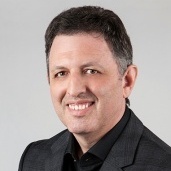
To become an engineer you have to study 4 years, and probably another 4 years (at least) to become a good one. Why people expect it to be different in trading? What does it really take to become proficient in trading? Can you expect to double your account every 6 months after being an active trader for few months?
I came across an excellent article by Colibri Trader. Here are some gems from the article.
The question of what it takes to become a master in any field (sport or business) has been in the epicentre of research for many years. It has occupied psychologists and philosophers alike for decades. Is it the innate talentprofessional athletes
Almost fifty years ago Herbert Simon and William Chase summed up a groundbreaking conclusion that is still echoing with importance:

There are no instant experts in chess—certainly no instant masters or grandmasters. There appears not to be on record any case (including Bobby Fischer) where a person reached grandmaster level with less than about a decade’s intense preoccupation with the game. We would estimate, very roughly, that a master has spent perhaps 10,000 to 50,000 hours staring at chess positions…
After Simon and Chase there have been numerous psychologists and authors testing this hypothesis and proving and disproving the rule of “The 10, 000 Hoursalmost none of them did create a masterpiece before they have been composing for a minimum of 10, 000 hours
In trading, it seems to be the same or at least really similar. I don’t know a lot of other traders, whom after an honest conversation have not shared with me that have spent years of losing money consistently before becoming profitable. In my trading career I remember just one trader who told me that was successful straight from the very beginning. He was sharing with me that it only took him 3 months on a simulatorTrading, as any other highly competitive sport discipline, takes a lot of hours in front of the screens and practice.
In a book that I recently read (Focus: The Hidden Driver of Excellence), Daniel Goleman reveals the complex truth behind the popular 10,000 rule:
The “10,000-hour rule” — that this level of practice holds the secret to great success in any field — has become sacrosanct gospel, echoed on websites and recited as litany in high-performance workshops. The problem:it’s only half true. If you are a duffer at golf, say, and make the same mistakes every time you try a certain swing or putt, 10,000 hours of practicing that error will not improve your game. You’ll still be a duffer, albeit an older one.
No less an expert than Anders Ericsson, the Florida State University psychologist whose research on expertise spawned the 10,000-hour rule of thumb, said, “You don’t get benefits from mechanical repetition, but by adjusting your execution over and over to get closer to your goal.”
“You have to tweak the system by pushing,” he adds, “allowing for more errors at first as you increase your limits.
The words of Ericsson cannot be more true regarding the trading field. Professional traders know that going out of the comfort zone is what makes a difference in the long-run. Imagine you are doing the same trading mistake over and over again. The only way to get rid of your bad habits is to get out of your “comfort zone” and do something differently. Even if you are not sure where your mistake is, you should put all of your efforts into trying to find it. Only then and after long hours of practice, you would be able to become profitable. What matters in this case is not only the time invested in trading, but the quality of the time. It appears that even if you stay 20,000 hours in front of your screens, it won’t make a difference if you are doing the same mistakes repeatedly.
It seems obvious and simple, but modern education is build on the premise of sheer time investment. That is why it is important to emphasize on the fact that success is “deliberate practice”accompanied or guided by a professional and skilled coach or mentor.

Hours and hours of practice are necessary for great performance, but not sufficient. How experts in any domain pay attention while practicing makes a crucial difference. For instance, in his much-cited study of violinists — the one that showed the top tier had practiced more than 10,000 hours — Ericsson found the experts did so with full concentration on improving a particular aspect of their performance that a master teacher identified.
That is completely in-line with trading field. You need an objective feedback from somebody, who can monitor your performanceIt is imperative that you are coached by a real professionalevery world-class sports champion has a coach
In the end, it seems that the trading strategy that you are using is not the most important element of becoming a master trader. It is the feedback that you receive from really experienced traders and the quality of the time invested
Some quick tips and facts
My good friend Kirk Du Plessis from OptionAlpha lists few things to consider as you write down your expectations and goals.
- More traders lose more money than they make
- Only a small percentage of retail traders are profitable
- Paper trade first with a small amount of money
- You will have losing trades
- Don’t expect to become financially independent
Those are all great quotes. I suggest remembering them when you get frustrated and overwhelmed by the amount of information and learning curve required to become a successful trader.
Edited January 11, 2018 by Kim
What Is SteadyOptions?
Full Trading Plan
Complete Portfolio Approach
Diversified Options Strategies
Exclusive Community Forum
Steady And Consistent Gains
High Quality Education
Risk Management, Portfolio Size
Performance based on real fills
Non-directional Options Strategies
10-15 trade Ideas Per Month
Targets 5-7% Monthly Net Return
Recent Articles
Articles
Pricing Models and Volatility Problems
Most traders are aware of the volatility-related problem with the best-known option pricing model, Black-Scholes. The assumption under this model is that volatility remains constant over the entire remaining life of the option.
By Michael C. Thomsett, August 16

- Added byMichael C. Thomsett
- August 16
Option Arbitrage Risks
Options traders dealing in arbitrage might not appreciate the forms of risk they face. The typical arbitrage position is found in synthetic long or short stock. In these positions, the combined options act exactly like the underlying. This creates the arbitrage.
By Michael C. Thomsett, August 7

- Added byMichael C. Thomsett
- August 7
Why Haven't You Started Investing Yet?
You are probably aware that investment opportunities are great for building wealth. Whether you opt for stocks and shares, precious metals, forex trading, or something else besides, you could afford yourself financial freedom. But if you haven't dipped your toes into the world of investing yet, we have to ask ourselves why.
By Kim, August 7

- Added byKim
- August 7
Historical Drawdowns for Global Equity Portfolios
Globally diversified equity portfolios typically hold thousands of stocks across dozens of countries. This degree of diversification minimizes the risk of a single company, country, or sector. Because of this diversification, investors should be cautious about confusing temporary declines with permanent loss of capital like with single stocks.
By Jesse, August 6

- Added byJesse
- August 6
Types of Volatility
Are most options traders aware of five different types of volatility? Probably not. Most only deal with two types, historical and implied. All five types (historical, implied, future, forecast and seasonal), deserve some explanation and study.
By Michael C. Thomsett, August 1

- Added byMichael C. Thomsett
- August 1
The Performance Gap Between Large Growth and Small Value Stocks
Academic research suggests there are differences in expected returns among stocks over the long-term. Small companies with low fundamental valuations (Small Cap Value) have higher expected returns than big companies with high valuations (Large Cap Growth).
By Jesse, July 21

- Added byJesse
- July 21
How New Traders Can Use Trade Psychology To Succeed
People have been trying to figure out just what makes humans tick for hundreds of years. In some respects, we’ve come a long way, in others, we’ve barely scratched the surface. Like it or not, many industries take advantage of this knowledge to influence our behaviour and buying patterns.

- Added byKim
- July 21
A Reliable Reversal Signal
Options traders struggle constantly with the quest for reliable
By Michael C. Thomsett, July 20

- Added byMichael C. Thomsett
- July 20
Premium at Risk
Should options traders consider “premium at risk” when entering strategies? Most traders focus on calculated maximum profit or loss and breakeven price levels. But inefficiencies in option behavior, especially when close to expiration, make these basic calculations limited in value, and at times misleading.
By Michael C. Thomsett, July 13

- Added byMichael C. Thomsett
- July 13
Diversified Leveraged Anchor Performance
In our continued efforts to improve the Anchor strategy, in April of this year we began tracking a Diversified Leveraged Anchor strategy, under the theory that, over time, a diversified portfolio performs better than an undiversified portfolio in numerous metrics. Not only does overall performance tend to increase, but volatility and drawdowns tend to decrease:
Saturday, October 10, 2020